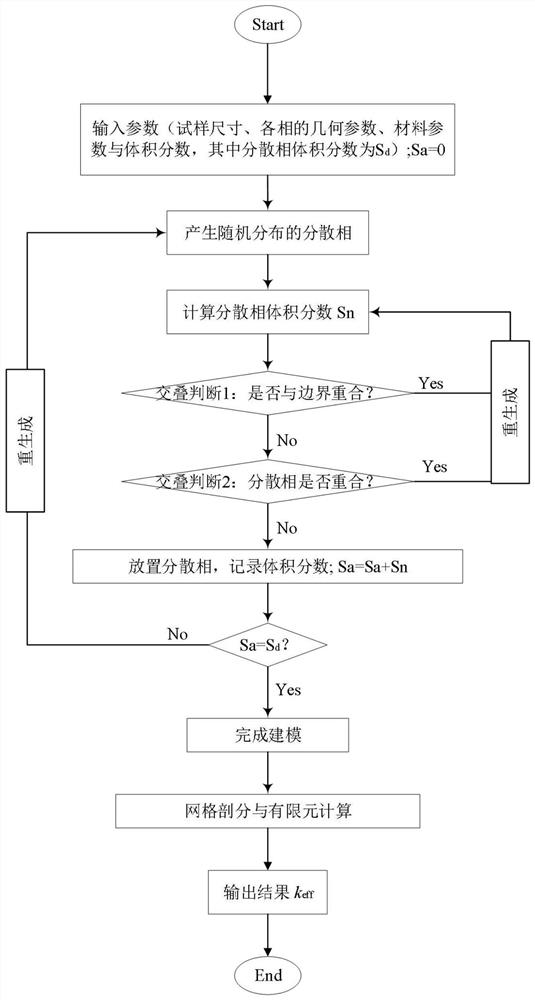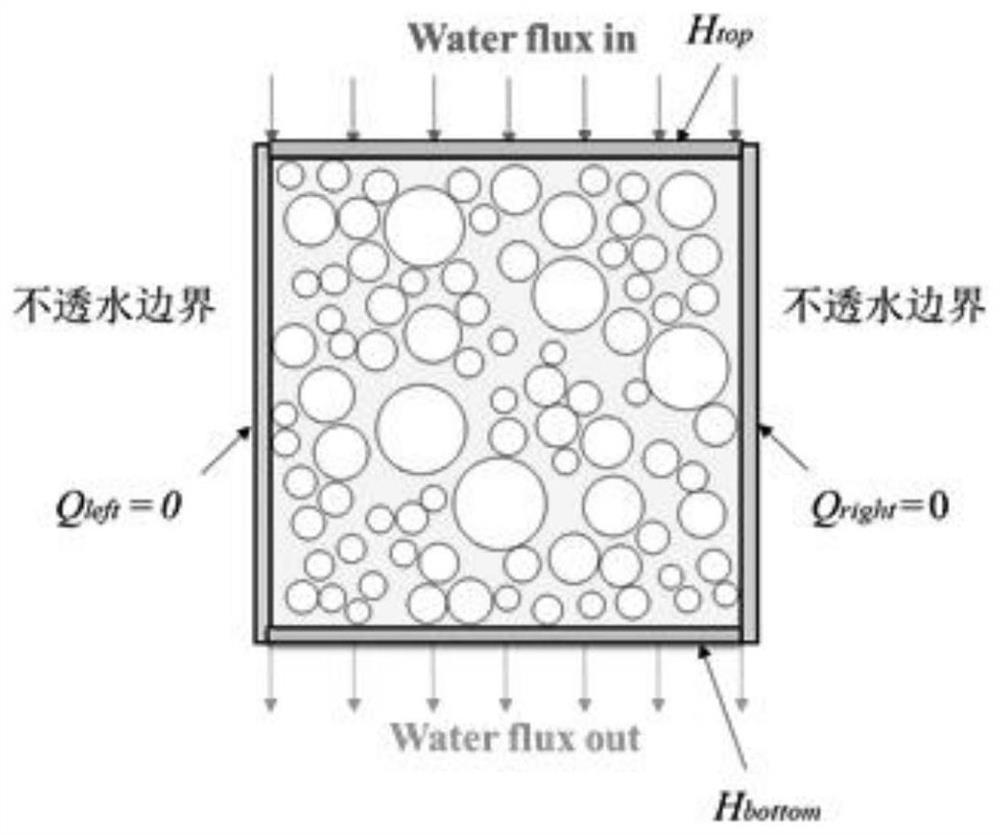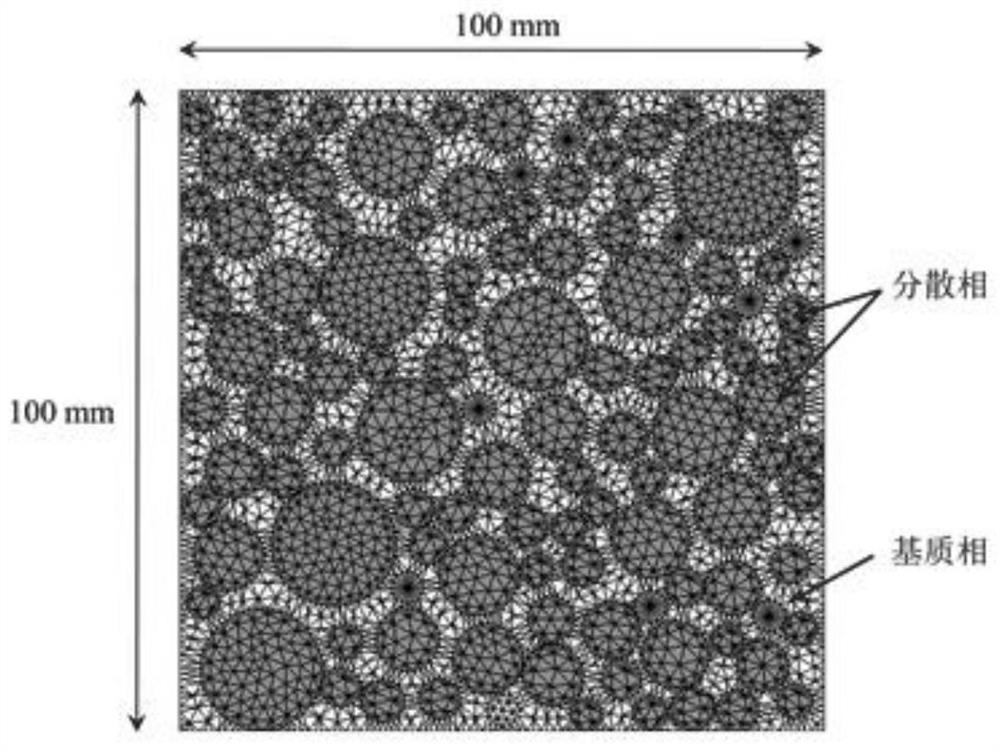Mesoscale Research Method of Equivalent Permeability Coefficient of Multiphase Composites
A composite material and equivalent permeation technology, which is applied in the field of research on the properties of multiphase composite materials, can solve problems such as the inability to reflect the seepage mechanism of fluid flow conditions, and the inability to obtain the general law of seepage, so as to achieve simple and clear calculation principles and strong operability , The effect of simple calculation principle
- Summary
- Abstract
- Description
- Claims
- Application Information
AI Technical Summary
Problems solved by technology
Method used
Image
Examples
Embodiment 1
[0055] In this example, according to the research method of the equivalent permeability coefficient of the multiphase composite material proposed in the present invention, the effect of the spatial arrangement of the dispersed phase on the permeability coefficient of the multiphase composite material is explored. Specific steps are as follows:
[0056] (1) Determine the attributes of the research object.
[0057] ① Determine the geometric size
[0058] The simulated sample size is 100mm×100mm. Each dispersed phase is regarded as a circle with a radius of 5-20 mm, randomly distributed in the matrix and not in contact with each other.
[0059] ② Determine the volume fraction of each phase: the volume fraction of the dispersed phase is 60%, and that of the matrix phase is 40%.
[0060] ③ Determine the material parameters of each phase
[0061] The permeability coefficients of each phase are respectively: the permeability coefficient of the dispersed phase is 5×10 -3 m / s, the...
Embodiment 2
[0084] In this example, according to the research method of the equivalent permeability coefficient of the multiphase composite material proposed by the present invention on a mesoscopic scale, the effect of different permeability coefficient ratios of each component on the permeability coefficient of the multiphase composite material is explored.
[0085] Specific steps are as follows:
[0086] (1) Determine the attributes of the research object.
[0087] ① Determine the geometric size
[0088] The simulated sample size is 100mm×100mm. Each dispersed phase is regarded as a circle with a radius of 5-20 mm, randomly distributed in the matrix and not in contact with each other.
[0089] ② Determine the volume fraction of each phase: the volume fraction of the dispersed phase ranges from 0-65%.
[0090] ③ Determine the material parameters of each phase
[0091] The permeability coefficients of each phase are respectively: the matrix phase is soil body, and its permeability co...
PUM
| Property | Measurement | Unit |
|---|---|---|
| osmotic coefficient | aaaaa | aaaaa |
| osmotic coefficient | aaaaa | aaaaa |
| osmotic coefficient | aaaaa | aaaaa |
Abstract
Description
Claims
Application Information
 Login to View More
Login to View More - R&D
- Intellectual Property
- Life Sciences
- Materials
- Tech Scout
- Unparalleled Data Quality
- Higher Quality Content
- 60% Fewer Hallucinations
Browse by: Latest US Patents, China's latest patents, Technical Efficacy Thesaurus, Application Domain, Technology Topic, Popular Technical Reports.
© 2025 PatSnap. All rights reserved.Legal|Privacy policy|Modern Slavery Act Transparency Statement|Sitemap|About US| Contact US: help@patsnap.com



